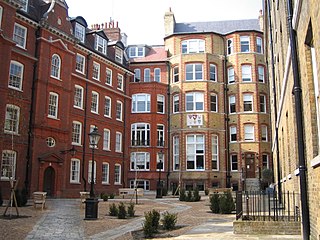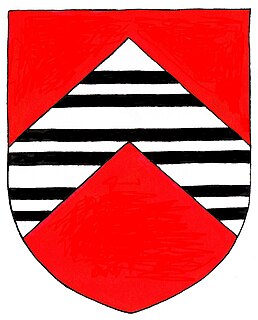Sir Thomas Dyke (10 December 1619 – 13 December 1669) was an English politician who sat in the House of Commons from 1660 to 1666.

The House of Commons of England was the lower house of the Parliament of England from its development in the 14th century to the union of England and Scotland in 1707, when it was replaced by the House of Commons of Great Britain. In 1801, with the union of Great Britain and Ireland, that house was in turn replaced by the House of Commons of the United Kingdom.
Dyke was born at Ninfield, Sussex, the son of Thomas Dyke of Horsham, Waldron, Sussex. He was admitted at St John's College, Cambridge on 29 April 1635 aged 16. In 1636, he was admitted at Inner Temple. [1] He was knighted on 19 June 1641. [2]

St John's College is a constituent college of the University of Cambridge. The college was founded by Lady Margaret Beaufort. In constitutional terms, the college is a charitable corporation established by a charter dated 9 April 1511. The aims of the college, as specified by its statutes, are the promotion of education, religion, learning and research.

The Honourable Society of the Inner Temple, commonly known as Inner Temple, is one of the four Inns of Court in London. To be called to the Bar and practise as a barrister in England and Wales, an individual must belong to one of these Inns. It is located in the wider Temple area of the capital, near the Royal Courts of Justice, and within the City of London.
In 1660, Dyke was elected Member of Parliament for Seaford in the Convention Parliament. He was re-elected MP for Seaford in 1661 for the Cavalier Parliament and sat until his death at the age of 50 in 1669. [3]
The UK parliamentary constituency of Seaford was a Cinque Port constituency, similar to a parliamentary borough, in Seaford, East Sussex. A rotten borough, prone by size to undue influence by a patron, it was disenfranchised in the Reform Act of 1832. It was notable for having returned three Prime Ministers as its members – Henry Pelham, who represented the town from 1717 to 1722, William Pitt the Elder from 1747 to 1754 and George Canning in 1827 – though only Canning was Prime Minister while representing Seaford.

The Convention Parliament followed the Long Parliament that had finally voted for its own dissolution on 16 March that year. Elected as a "free parliament", i.e. with no oath of allegiance to the Commonwealth or to the monarchy, it was predominantly Royalist in its membership. It assembled for the first time on 25 April 1660.

The Cavalier Parliament of England lasted from 8 May 1661 until 24 January 1679. It was the longest English Parliament, enduring for nearly 18 years of the quarter-century reign of Charles II of England. Like its predecessor, the Convention Parliament, it was overwhelmingly Royalist and is also known as the Pensioner Parliament for the many pensions it granted to adherents of the King.

